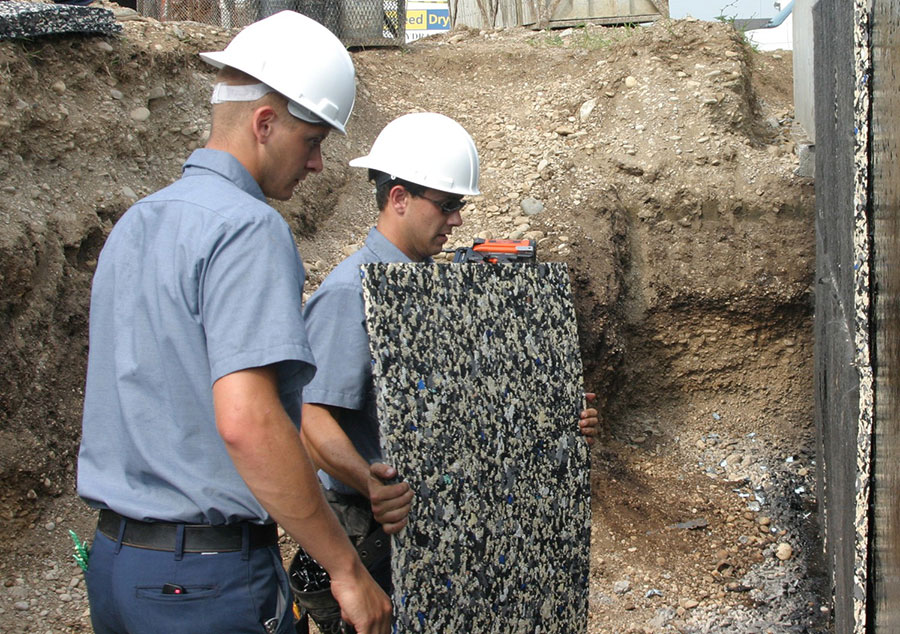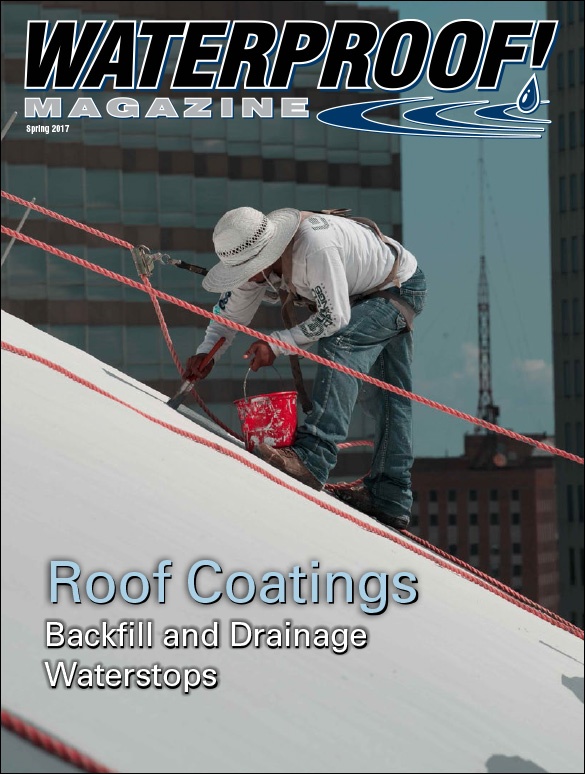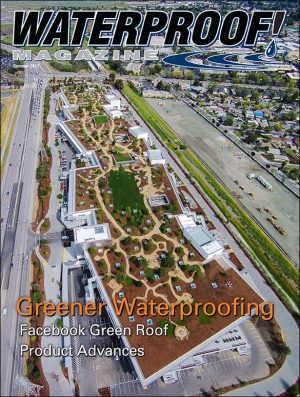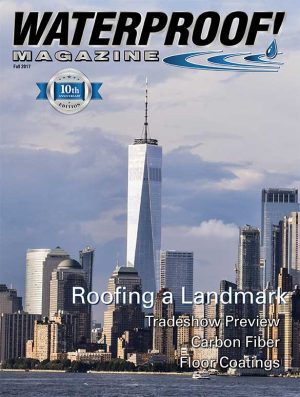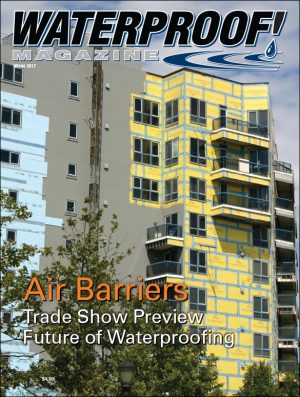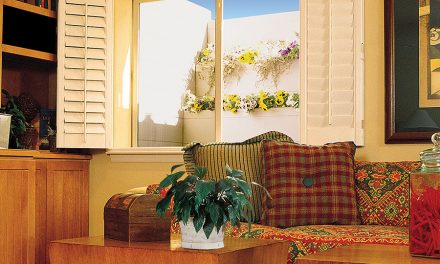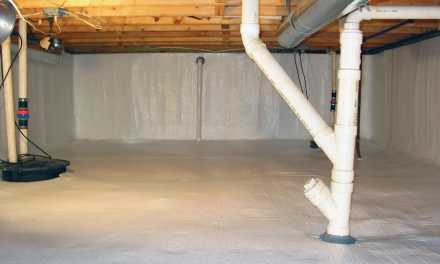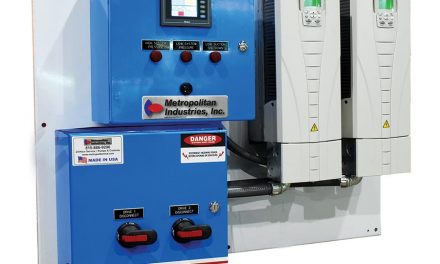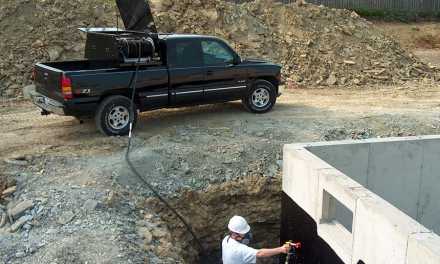Nearly all below-grade construction—commercial as well as residential—incorporates some sort of waterproofing layer.
These membranes are a critical component for keeping basements and other below-grade spaces dry, but they’re only half the solution.
In most areas of North America, a drainage system should also be installed to relieve hydrostatic pressure and extend the life of the waterproofing membrane. A number of different drainage methods are available to ensure the waterproofing membrane performs as designed.
Since the days of the Roman Empire, engineers and builders have used crushed stone or gravel as a drainage layer. Installed properly, water flows through the space between the aggregate to reach a footing drain that collects the water and directs it away from the structure. This method is inexpensive, widespread, and works well when installed correctly.
The drawback to these “aggregate drains” is that they require careful installation and offer no protection against backfill damage. Enthusiastic operators placing sharp aggregate directly against the waterproofing membrane can damage it. Also, the aggregate eventually clogs with soil, sometimes called “silting up.”
Beginning in the 1960s, new options began to appear that not only protect the waterproofing, but serve as a protection layer during the backfill process. Some also provide insulation. This article looks at a few of these modern materials.
Rigid Foam Boards
Rigid insulating drain panels can be made from expanded polystyrene (EPS) and extruded polystyrene (XPS) foams. These are a “three-in-one product,” serving as protection board, drainage layer, and insulation. Both types of foam are popular and will continue to perform well even after decades of service.
They’re also lightweight and easy to install. Contractors using spray-applied waterproofing systems can simply press the panels against the wall and the tackiness of the membrane will hold it in place until the wall is backfilled.
Foam works very well with waterproofing systems,” states John Cambruzzi at Insulfoam. “It’s well established and known as an extremely stable moisture and thermal performer.”
He continues, “The advantage of EPS is the insulation value you’re getting. Thermal insulation has become code in most climate zones. As a result when you need to insulate because you have working or living space on the inside, EPS gives you moisture and thermal advantages that no other product can.”
For optimal results, use a board with a filter fabric that covers the drain channels and keeps the sediment out. Also, if backfill pressure will be extreme, such as deep foundations, consider using a denser foam to prevent compression.
Semi-Rigid Systems
There are also a number of semi-rigid drain systems on the market that usually offer better flow rates but lower insulation values.
GMX Ultra-Dry is typical, combining fiberglass insulation with a resin binder to create a flexible lightweight sheet. Tremco’s Warm-N-Dri is similar. Like rigid foams, these lightweight panels can often be adhered to the wall with the spray-applied waterproofing. However, fiberglass can irritate skin, and the market has responded with alternatives.
ThermalDrain from GMX uses polyethelene fibers, which provide excellent drainage, and claims to be more durable than fiberglass. Drain & Dry from Mar-flex uses a bio-based binder and inorganic mineral wool rather than fiberglass. All of these are available with a geotextile face on one side.
A rather unique semi-rigid option is Shockwave, also by Mar-flex. It’s made from closed-cell, cross-linked polyethylene foam, so unlike a rigid foam board, which stays dented if hit, this rubber-like product rebounds to the original thickness, making it especially useful in soils that move during freeze-thaw and wet-dry cycles. It also offers some insulation value, and has a geotextile filter fabric bonded to one face to ensure it functions well for decades.
A final type of semi-rigid system is EnkaDrain, which relies on a tangle of polypropylene filaments to create an air gap. This design offers exceptional flow rates but minimal insulation.
Dimple Sheet Drains
Sheet drains, or dimpled membranes, are another popular option. They’re available in a wide range of sizes, compressive strengths, flow rates, filtration capabilities, and chemical resistance to suit virtually any drainage application.
Delta MS, made by Cosella-Dörken, is typical. Made from high-density extruded polyethylene, the product has an offset dimple pattern molded into the plastic that creates an air gap between the membrane and the foundation. Designed primarily for residential applications, the product provides outstanding compressive strength and impact resistance (Just over 5,200 psf).
Other examples of this type of product include Platon, SuperSeal and DMX. Many of these companies also manufacture dimpled membranes with a bonded geotextile face for more demanding applications. Examples include Tremco’s TremDrain, Cosella-Dörken’s Delta Drain, and similar products from Mar-Flex and Cetco. In this case, the dimples face out towards the soil, and the geotextile creates a free cavity for the water to drain down. Aimed primarily at below-grade commercial construction, these are becoming more common in residential markets as homes get bigger and owners build on sites with more difficult drainage issues.
Most of these dimple/geotextile products have a compressive strength of 10,000 to 15,000 psf and can drain 15 to 20 gallons per minute per lineal foot.
Sheet drains are usually mechanically fastened to the wall, using nails and proprietary “termination strips.”
Like other types of drainage products, dimple drains must be combined with footing drains to ensure water is directed away from the basement.
Whatever system of waterproofing, drainage board and footing drain you select, be absolutely sure the system is adequate for the conditions and that it’s installed correctly. Once it’s installed and the backfill process is complete, repairs are either impossible, or at the least expensive and complicated.
However, if you use the right waterproofing membrane, and combine it with a drainage system that’s right for the soil, climate, and building type, waterproofers can ensure problem-free below-grade living space for decades. Σ
Spring 2017 Back Issue
$4.95
Sealing Cold Joints with Waterstops
Waterstops for Expansion Joints
Basement Backfill and Drainage
The Key to a Successful Roof Coating
AVAILABLE AS DIGITAL DOWNLOAD ONLY
Description
Description
Sealing Cold Joints with Waterstops
By Stacy Byrd
Available in a variety of profiles and materials, waterstops play a major role in preventing water leakage at cold joints.
Waterstops for Expansion Joints
By Dan Chapman
Properly installed waterstops can prevent water from penetrating expansion joints, despite significant movement in the concrete.
Basement Backfill and Drainage
Rigid foam boards and dimple drain sheets are just two of the options available to relieve hydrostatic pressure and prevent damage to the waterproofing membrane during backfill.
The Key to a Successful Roof Coating
By James R. Kirby
New technology makes it possible to extend roof life and reduce energy use without removing the existing membrane, creating dramatic savings.
Additional Info
Additional information
| Magazine Format | Digital Download Magazine, Print Mailed Magazine |
|---|

